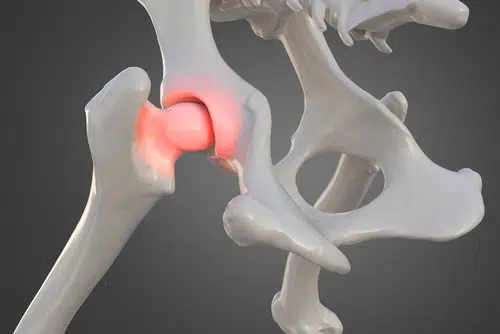Home » Blog » Pet » Pet Health & Safety » Let’s Explore Hip Dysplasia in Dogs
Categories
Tags
animal welfare
breed profile
buying a car
buying a pet
Car
car accessories
car care
car features
car insurance
Car safety
car sales
car service
cat
cat behaviour
cat body language
Cat Breeds
cat food
cat insurance
comprehensive car insurance
Dog
Dog Behaviour
dog body language
Dog Breeds
dog food
Dog Insurance
dog training
eco friendly cars
Kitten
New Car
pet accessories
pet activities
Pet Adoption
pet breeders
pet days of the year
pet fun stuff
Pet Health
pet insurance
pet parenting
Pet Safety
pet services
Puppy
rescue pets
road safety
road trip
safe driving
Recent Blog:
Facebook Posts
2 days ago
Growing old sometimes means we can’t take care of pets anymore. Find out some advice on what to do when this happens:![]()
![]() Senior Pet Parents – Contingency Plans for Your Pet – bit.ly/44bzwkS
... See MoreSee Less
Senior Pet Parents – Contingency Plans for Your Pet – bit.ly/44bzwkS
... See MoreSee Less
Senior Pet Parents' Contingency Plans for Pets
www.pd.com.au
Sometimes senior pet parents need more downtime. For older pet owners, this can be tricky to navigate if their dog or cat is full of beans and wants to4 days ago
Before you rev up the engine, let’s run through a checklist of things to do before starting your car. Not only do these steps ensure your safety (and that of others around you), but they also help in maintaining your vehicle's longevity.![]()
![]() Driving Tips: Your Checklist Before Starting Your Car -
... See MoreSee Less
Driving Tips: Your Checklist Before Starting Your Car -
... See MoreSee Less
Driving Tips: Your Checklist Before Starting Your Car
www.pd.com.au
Heading out for a drive? Hold up a second! Whether you're dashing off to work, running errands, or embarking on a road trip adventure, there are a few1 week ago
Are intestinal worms setting up camp in your dog’s gut without paying rent? Here’s how to spot the main culprits and get rid of them too:![]()
![]() Preventing, Identifying and Treating Intestinal Worms in Dogs - bit.ly/43YjCKu
... See MoreSee Less
Preventing, Identifying and Treating Intestinal Worms in Dogs - bit.ly/43YjCKu
... See MoreSee Less
Preventing, Identifying and Treating Intestinal Worms in Dogs
www.pd.com.au
Intestinal worms, such as roundworms in dogs are one of the least glamorous topics on the planet. These intestinal parasites that basically use our dogsHip dysplasia in dogs is quite common in breeds like the Labrador, Golden Retriever, and German Shepherd. It’s a disorder that happens because the dog’s hip joint doesn’t develop correctly.
As with many hereditary conditions, it tends to be more of an issue in certain purebred dogs and less of an issue with others.
If you have a dog with hip dysplasia or who’s at a higher risk for developing it in future, knowing the signs could help you treat and manage the condition more effectively.
Table of contents
What is hip dysplasia?
As we mentioned, hip dysplasia is a condition that occurs when a dog’s hip joint doesn’t develop the way it should. This happens during the growing phase, when a puppy is still developing and reaching maturity.
The hip is a ball and socket joint. For correct development, the ball and socket must grow at the same rate to ensure the joint stays properly aligned. In dogs with hip dysplasia, the ball and socket don’t grow at equal rates so the joint becomes too loose.
Doesn’t sound too bad, right? Unfortunately, the loose joint means abnormal movement. This movement wears away cartilage and can cause scar tissue and bone spurs to form. As the dog ages, this can result in arthritis and degenerative joint disease.
Hip dysplasia in dogs is a genetic disease that can be passed from parent to puppy. That’s why certain breeds are particularly prone to it, and mainly larger breed dogs. However, hip dysplasia is also affected by environmental factors like the dog’s weight, the amount of exercise they do, their growth rate, and their muscle mass.
Which breeds are the most affected?
As mentioned, some dog breeds are more prone to hip dysplasia than others due to their genetic predisposition, body size, and structure. Some of the dog breeds that are most commonly prone to hip dysplasia include:
- German Shepherds
- Belgian Malinois
- Labradors
- Rottweilers
- Alsations
- Golden Retrievers
- Great Danes
- Saint Bernards
- Bulldogs
- Mastiffs
- Bernese Mountain Dogs
- Newfoundland Dogs
It’s important to note that while these breeds are more prone to hip dysplasia, it can occur in any breed or mix of breeds.

What are the symptoms of hip dysplasia?
The symptoms of hip dysplasia can vary quite a lot depending on the severity of the condition. Though it starts to develop during puppyhood, many dogs don’t show any outward signs until they’re older.
Signs of hip dysplasia in dogs:
- Limping or soreness when moving around (on the back legs).
- Bunny hopping (where the dog’s back legs move together in a small hop instead of normal running).
- Clicking or popping sounds in the hips, especially when moving around or getting up.
- Inability to exercise for long periods.
- A wobbly, weak, or swaying walk.
As they get older and the hip dysplasia worsens, you may also notice:
- Increased limping or soreness after exercising.
- Muscle weakness (often a visible lack of muscle) in the back legs. This might be seen in one or both legs.
- Difficulties with jumping.
- Difficulties with climbing stairs or getting on and off furniture.
If you think you’ve noticed signs of hip dysplasia in dogs in your furkid, read on for treatment and management options.

How is hip dysplasia in dogs treated? Can it be cured?
Early diagnosis and treatment of hip dysplasia in dogs can decrease (and sometimes even prevent) long term complications like arthritis. There are a variety of treatment options available, both surgical and non-surgical. Your vet will advise you on the best options for your dog, depending on factors like their age, the severity of the hip dysplasia, and your budget.
Your vet is likely to prescribe pain medication like anti-inflammatories to help manage your dog’s day to day pain and reduce inflammation. They may suggest joint supplements too, such as glucosamine, as well as hydrotherapy or even physiotherapy. They could also recommend injections to help manage conditions like arthritis.
Lifestyle management is another key to coping with hip dysplasia in dogs. For instance:
- Managing their diet to prevent weight gain, which can strain the hips. Obesity is also related to other conditions like IVDD and diabetes in dogs.
- Rest periods when needed.
- Keeping your dog from over-exercising and straining their joints.
If your dog responds well to ongoing management, surgical intervention may not be necessary. In some cases though, surgery is recommended for the best results.

Surgical options
If your dog has severe hip dysplasia or doesn’t respond well to daily management of the condition, you may need to consider surgery. There are a few different surgical options and you’ll probably need to consult with a specialist vet to decide what’s best for your particular pup.
However, here’s a brief overview of the surgical options available:
- If you catch hip dysplasia very early, puppies under 18 weeks old can undergo joint-saving procedure called juvenile pubic symphysiodesis. This fuses two pelvic bones together so the rest of the hip can develop normally, and gives increased movement in the hips.
- Dogs younger than 10 months can have a procedure called a triple pelvic osteotomy (TPO). With TPO surgery, the ball and socket joint are realigned so they can develop properly. It has good success rates, but has to be done before there’s damage to the socket.
- Adult dogs can undergo total hip replacements, where the hip joint is replaced with an artificial one. This is invasive and expensive, but can restore normal function to the hip and is sometimes recommended when hip dysplasia in dogs is severe.
- Adult dogs can also have femoral head osetotomies. This is where part of the bone of the hip joint is removed. Over time, this turns to scar tissue and creates a fake joint which holds the bones in place. Although it does relieve pain, the dog doesn’t have the same level of restored movement as they would with a hip replacement. It also isn’t suitable for all dogs and is usually recommended only for older or smaller dogs.
A lot of these surgical treatments have good success rates for treating hip dysplasia in dogs. So good, in fact, they may allow your dog to return to a fairly normal life.

The outlook for dogs with hip dysplasia
Hip dysplasia isn’t a death sentence. Many dogs have a normal life expectancy with a good quality of life despite hip dysplasia.
That said, it’s a painful condition and will require lifelong treatment or surgical intervention. Many dogs respond very well to ongoing management, and can happily live without significant pain or reduced quality of life.
As they age, they are more likely to develop arthritis. If you suspect your dog is developing arthritis, speak to your vet. They can help you manage the condition and make treatment decisions.
Dog insurance for dodgy hips and more
As you can imagine, treatment for hip dysplasia in dogs can quickly become expensive. Both for surgical and non-surgical intervention.
However, if you have a decent pet insurance policy and the hip dysplasia wasn’t a pre-existing condition when you signed up, you won’t have to foot the bill alone. Your monthly premium is a small price to pay for that peace of mind! That’s why you should get dog insurance while your pet is young.
Check out our dog insurance plans here to find out which level of cover best suits your needs. It’s best to start protecting them when they’re young and healthy – before any issues arise (you’ll find pre-existing conditions aren’t covered by insurance).
If you buy online with us you’ll get one or more months of FREE insurance and no lock-in contract!
Share On:




